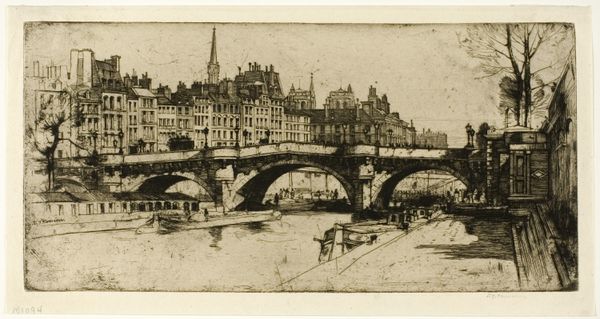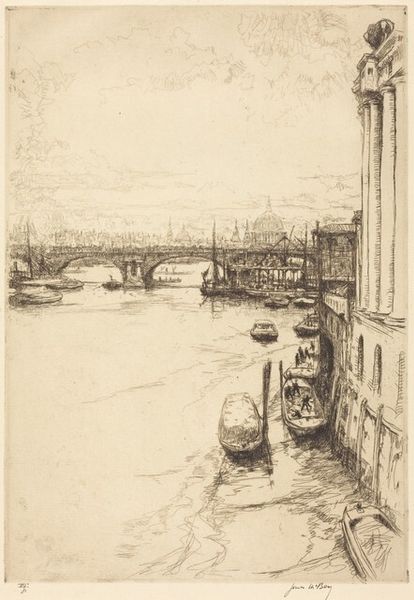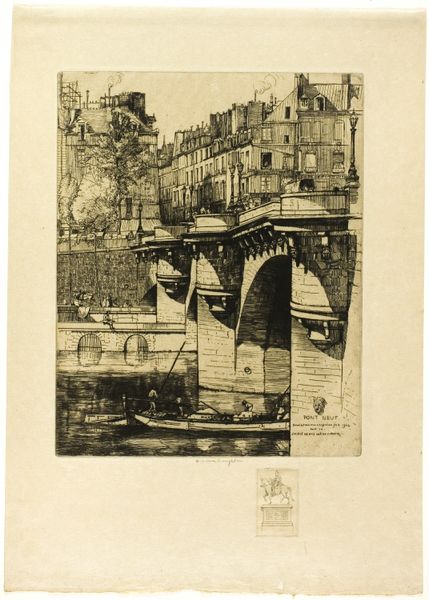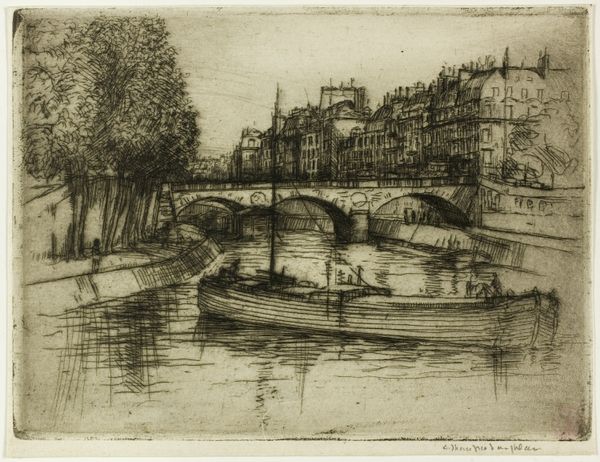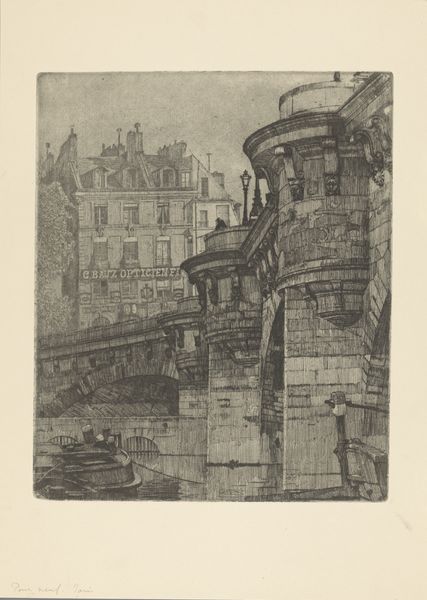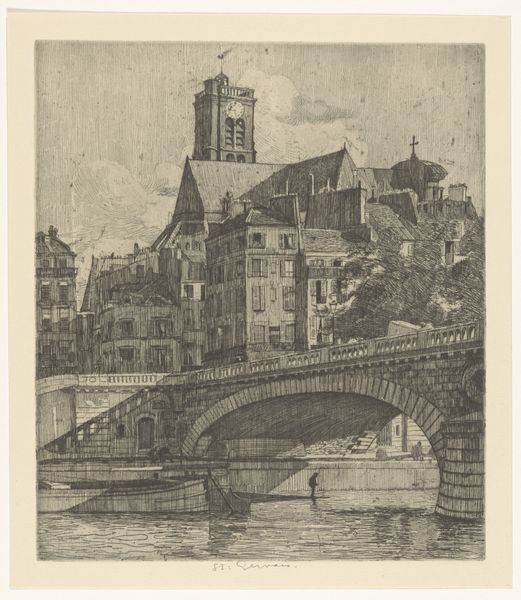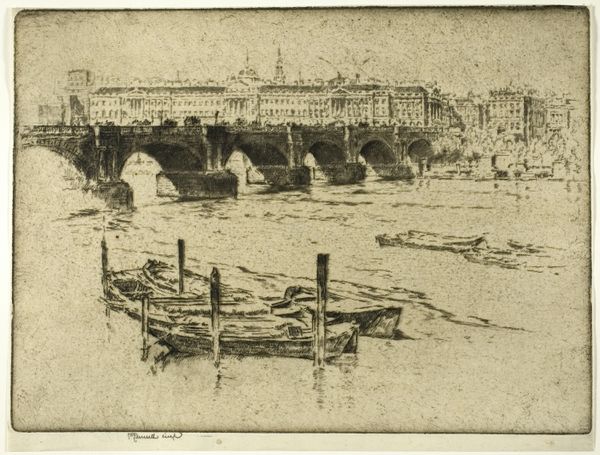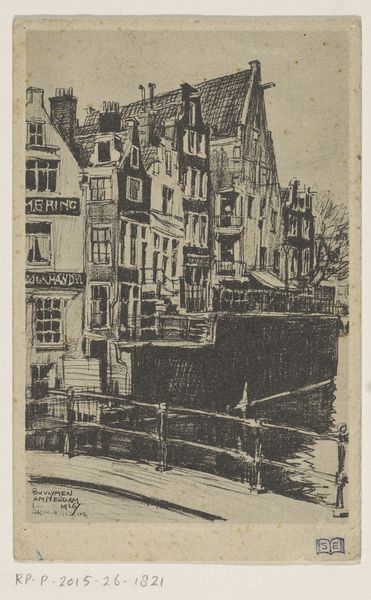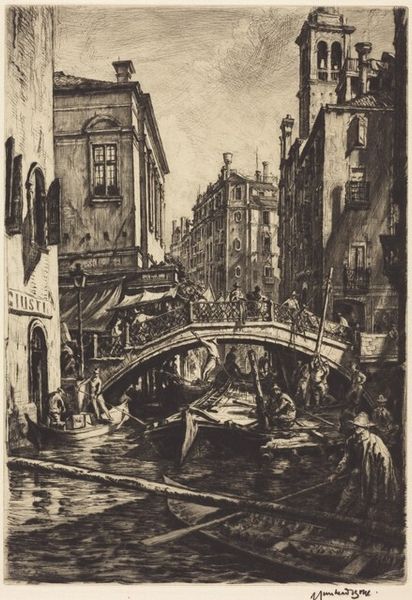
Dimensions: plate: 25.88 × 22.7 cm (10 3/16 × 8 15/16 in.) sheet: 35.4 × 29.21 cm (13 15/16 × 11 1/2 in.)
Copyright: National Gallery of Art: CC0 1.0
Ernest Roth’s "Pont Marie, Paris" is an etching, a printmaking process that dates back to the Middle Ages. To make this image, Roth would have coated a metal plate with a waxy, acid-resistant ground, then scratched his image into that surface with a fine needle. The plate was then submerged in acid, which bit into the exposed lines. This painstaking process allowed him to achieve an astonishing level of detail, evident in the intricate rendering of the bridge’s stonework and the reflections in the water. The linear quality of the etching perfectly suits the architectural subject, and the tonal range of the print reflects the amount of time that the plate was exposed to the acid. The print also embodies a tension. It required slow, skilled labor, yet it was made to produce multiple copies for a wider audience. Roth’s image reminds us of the human touch in a world increasingly dominated by mass production.
Comments
No comments
Be the first to comment and join the conversation on the ultimate creative platform.
